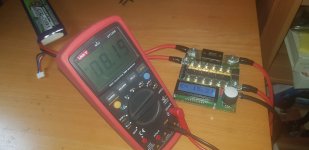frnandu said:
Is this "REMOVE SHORT" error cause only possible if this diode is somehow damaged (even if it looks ok)?
If so, can it be easily replaced with an ordinary soldering iron?
I need to order from you new electrodes, so if indeed I should replace this diode for stopping the error, maybe you can send me a replacement together with the electrodes?
It is not always easily noticable when these components crack, sometimes the black top only lifts up very slighlty above the large metal tab at the one end. There are other possible reasons for this message, but I now realize that I haven't read your initial post correctly. You say that you had removed and connected the fuse and that it then worked. I somehow had read that you had removed the TVS diode, which is why I gave that warning. This is a completely different situation, and I am thinking about this right now as I haven't had this before... A few questions:
- you actually removed and replaced the fuse while the system was powered from the battery, right?
- are you sure that you have never accidentally touched something on the logic board with one of the electrodes?
- are you sure that you haven't applied external voltage to the electrodes?
- can you once measure the voltage across the electrodes, a) hafter having powering the system, and b) after you have removed+replaced the fuse?


